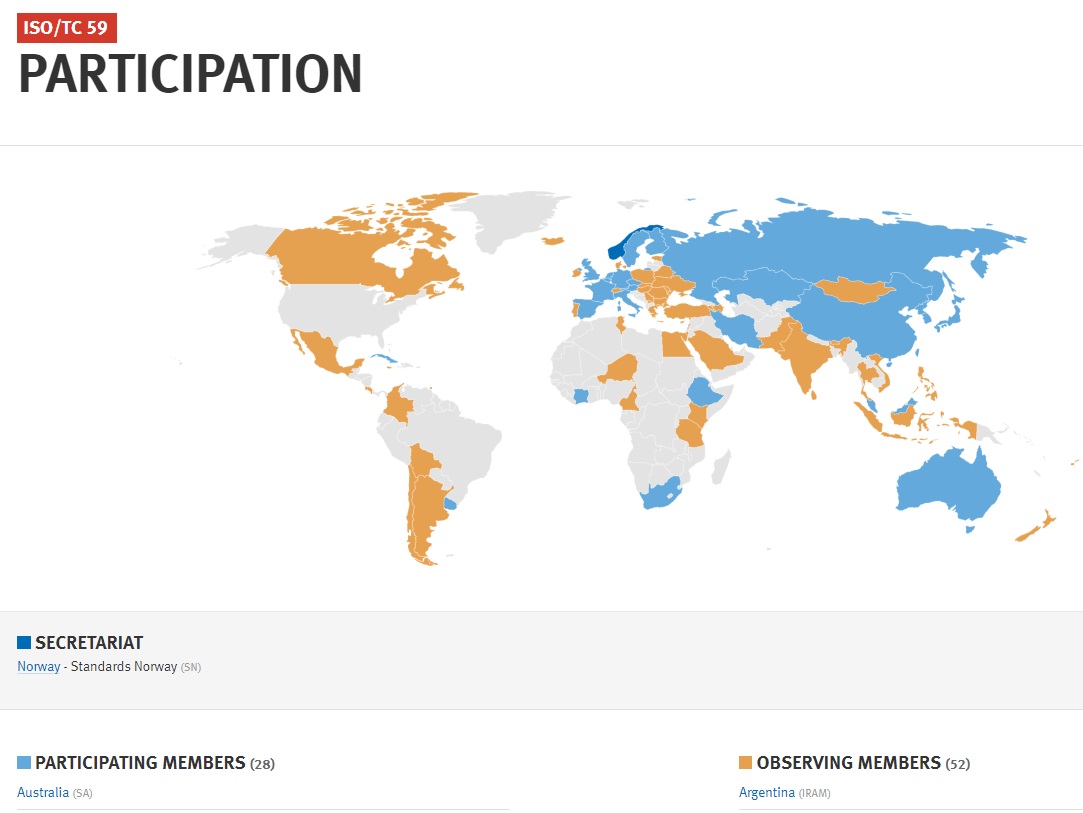Tag Archives: Norway
- Home
- Posts tagged "Norway"

Norsk Salmebok
This content is accessible to paid subscribers. To view it please enter your password below or send mike@standardsmichigan.com a request for subscription details.
Kokkekaffe
Standards Norway | University of Oslo Statement of Cash Flows: NOK (000) 677 989
Coffee and cardiovascular disease: From epidemiological to etiological perspective | Ulsaker, Hilde
“The Strange Death of Europe” | Douglas Murray
God morgen #arendalsuka ! På MS Sunnhordaland er kaffen og vaflene klare. Kl 8:30 er står følgende på blokka: Hvem har ansvaret når den offentlige debatten flyttes til Facebook? https://t.co/WVBFxqWR5P… @OsloMet @UniOsloHF pic.twitter.com/Eq97wFNxmb
— Universitetet i Oslo (@UniOslo) August 16, 2018
Building Construction Management
The construction industry is one of the largest employers in any community. Many labor unions in the United States support construction of education facilities. The so-called “multiplier effect” cited by economists means that when you add one person working in the construction industry you create two additional jobs in other sectors. With an annual construction spend of $75-10 billion, the education industry contributions mightily to the economy of host communities. Any spend at that rate — the largest non-residential building construction in the United States — presents opportunity higher effectiveness and better profitability for all sides involved in a construction project just by doing a few simple things well:
- Provide general terminology; especially important when equipment (fenestration, environmental air systems, elevators, generators) originate from offshore manufacturers
Organization of information in the processes of design, manufacture and construction - Provide geometric requirements for buildings, building elements and components including modular coordination and its basic principles, general rules for joints, tolerances and fits, performance and test standards for sealants;
- Provide general rules for other performance requirements, including functional and user requirements related to service life, sustainability, accessibility and usability;
Procurement processes, methods and procedures.
A paradigm shift is is well underway in the use of building information. Improved capital efficiency can be achieved with better data handling and information flows between project actors; falling into the wheelhouse of ISO TC 59; described in the links below:
STRATEGIC BUSINESS PLAN ISO/TC 59

CLICK ON IMAGE | Norway is the Global Secretariat | ASTM International is ANSI’s US Technical Advisory Group Administrator
While parts of the scopes of various subcommittees may already be familiar to construction professionals — Building Information Modeling (BIM), for example — the bulk of the work product remains fairly high-level. We will keep an eye on it.
You may do so on your own by communicating directly with ANSI’s ISO Team and/or either of ANSI’s US Technical Advisory Group Administrators:
For TC/59/SC 8 (Sealants)
ASTM International
David Lee / 2128 W Evergreen Ave / West Conshohocken, PA 19428-2959 / Phone: (610) 832-9585 / Email: dlee@astm.org
For TC/59/SC 13 (BIM)
American Society of Heating, Refrigerating and Air-Conditioning Engineers, Inc.
Brian Cox / Training & Safety Office / 30 Hart Street Room 301 / Atlanta, GA 30329 / Phone: (404) 636-8400 / Email: bcox@ashrae.org
Because this topic cuts across all building industry disciplines we maintain this committee’s titles on standing agendas of several colloquia; Construction Spend, E Pluribus Unum, Model Building Code and Global teleconferences. See our CALENDAR for the next online meeting; open to everyone.
Issue: [15-211]
Category: Management
Colleagues: Mike Anthony, Christine Fischer, Jack Janveja, Richard Robben
LEARN MORE:
Winter Week 4 | January 20 – 26
“Im tiefen Winter” 1923 | Richard Freiherr von Drasche-Wartinberghttps://t.co/m7Yd9fKKr7 pic.twitter.com/U6Zd0P1k0H
— Standards Michigan (@StandardsMich) January 24, 2024
Monday | January 20 | Colloquium 16:00 UTC
Snow and smiles all around campus. ❄️ pic.twitter.com/88SWvb2pjc
— Yale University (@Yale) January 20, 2025
Tuesday| January 21 | Colloquium 16:00 UTC
Wednesday | January 22 | Colloquium 16:00 UTC
Our school district just sent the notice out no school Tuesday or Wednesday. Happy snow day to us.! pic.twitter.com/WLvMaHvr5S
— 🗯️Angel🗯️ (@MsAngel0077) January 19, 2025
Thursday | January 23 | Colloquium 16:00 UTC
Friday | January 24 | Colloquium 16:00 UTC
Saturday | January 25
Sunday | January 26
It's over for fat bitches pic.twitter.com/hqxxVoM1sf
— Nordgirls 🌲🏔️🌻 (@nordgirls) January 20, 2025
Does Consciousness Extend Beyond Brains
Cognitive science is an interdisciplinary field that explores the study of mental processes such as perception, memory, reasoning, and language comprehension. Drawing from psychology, neuroscience, computer science, linguistics, and philosophy, cognitive science aims to understand how the mind works and processes information. Researchers investigate cognitive phenomena through empirical studies, computational models, and theoretical frameworks. By examining the complex interplay between the brain, behavior, and external stimuli, cognitive science seeks insights into human intelligence, problem-solving, decision-making, and consciousness.
The field contributes to advancements in artificial intelligence, human-computer interaction, and our understanding of the mind-brain relationship.
Comment: “This was my first experience of Luhrman, and I much appreciated her summary that the essence of consciousness lies in our relationship with external ‘others’, which seems to fit well with Sheldrake’s emphasis on the interconnectedness of self-organising systems and also Anil’s refutation of the idea the brain is ‘merely’ an information-processing system. However, I found the discussion on information-processing moved on a bit too quickly and dismissively; there is much explanatory power in Karl Friston’s work that seems to me to have great value, even though I agree that information processing is not the whole story. Malone did a fabulous job of holding the space for a creative tension in the debate, and it was a pleasure to experience his style of inquiry again (I hope he will be making another of his wonderful films soon).
My own curiosity has settled recently on the related and emerging area of inquiry labeled as “enactive cognition” and it would be wonderful to see a future debate bringing these ideas into tension with those of enactivists like Di Paolo and Thompson, plus phenomenological insights from the likes of Maclaren and Callard. I share Anil’s frustration with Silicon Valley’s pursuit of technology such as AI regardless of the ethics, also seemingly with scant regard for the dangers of their move-fast-and-break-things approach.
On a positive note, my limited exposure to the AI community at least comforts me that they are an extremely curious and deep-thinking community. The problem, it seems to me, is the lack of transparency on the part of tech firms that don’t share their research data with public academics; more patient science is needed to inform the work of these clever engineers and developers. My fear is not of the technology so much as its financial backers, and the profit- and power-oriented goals that most tech leaders are pursuing. For all the early talk of not wanting to repeat the mistakes of social media platforms, some vocal segments of AI culture seem to have confabulated their way towards justifying any innovation on the grounds of its ‘great potential’ for humanity – here we go again...” — @neurojitsu

Rud videregående skole Dance
This content is accessible to paid subscribers. To view it please enter your password below or send mike@standardsmichigan.com a request for subscription details.
Rud videregående skole Kerst
This content is accessible to paid subscribers. To view it please enter your password below or send mike@standardsmichigan.com a request for subscription details.
New update alert! The 2022 update to the Trademark Assignment Dataset is now available online. Find 1.29 million trademark assignments, involving 2.28 million unique trademark properties issued by the USPTO between March 1952 and January 2023: https://t.co/njrDAbSpwB pic.twitter.com/GkAXrHoQ9T
— USPTO (@uspto) July 13, 2023
Standards Michigan Group, LLC
2723 South State Street | Suite 150
Ann Arbor, MI 48104 USA
888-746-3670
















